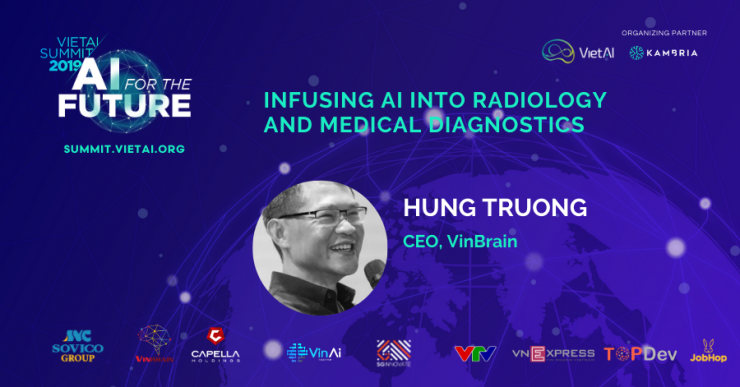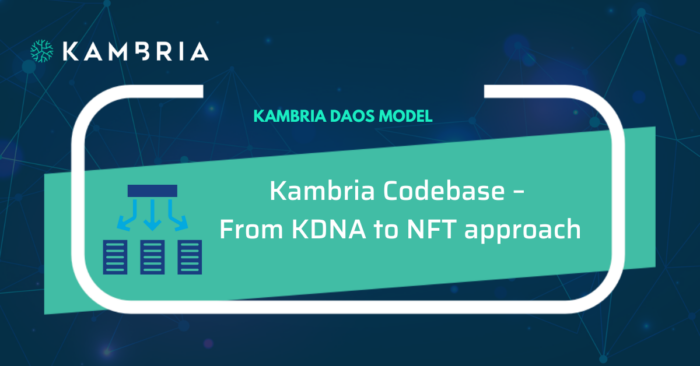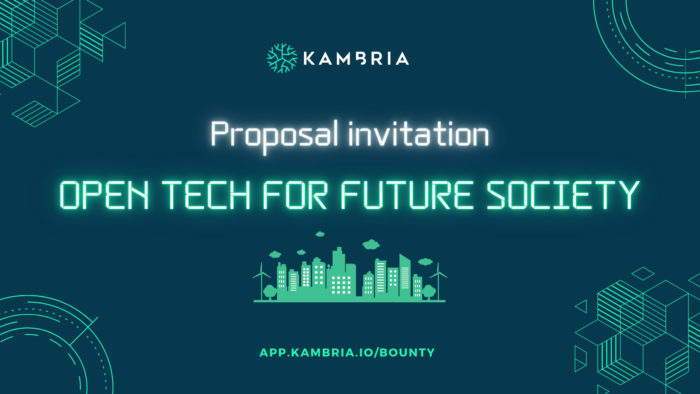As part of the VietAI Summit 2019, Hung Truong, CEO of VinBrain, gave a presentation about the challenges and solution to infusing AI into radiology and medical diagnostics.
The mission of VinBrain is to infuse AI into medicine and medical image diagnostics. In this talk, we will purposely share to audience challenges in this problem space in terms of data and knowledge bias by hospital, unbalanced and complexity in labelling medical images while generalization of machine learning model is important for a successful AI product
Infusing AI in Radiology and Medical Diagnostics
This presentation, given by VinBrain’s CEO - Hung Truong, covers how AI is being used to solve critical challenges in infusing AI into medical diagnostics. VinBrain’s mission is to create a cognitive methods and solutions, both in software and hardware, to improve people’s lives and operational efficiency.
Their first product, VBMDa, will focus on creating Radiology AI Assistants. Essentially creating an autonomous “second doctor” for diagnosing patients with potential ailments. VBMDa helps provide accurate, consistent, and scalable radiology diagnostics, based on a unique” ground truth golden set collection” methodology - combined with advanced AI technologies. VinBrain is combining a number of AI architectures such as Computer Vision, CNN, NLP, and newer technologies such as retraining models, transfer learning, and multi-tasking.
The Challenges
Finding Quality Data
Currently, in diagnostics, you have human doctors reviewing the data to attempt to diagnose a patient’s particular ailments so that you can properly treat the patient. Though this has been the common practice for decades now, the “human” element of diagnostics poses a significant challenge. However, healthcare is currently utilizing AI to provide faster and more reliable results. Current AI systems are trained to systematically sift through the metadata in order to make informed decisions on whether or not a patient is actually sick, however, labeling data can prove to be a significant challenge. Properly labeling and interpreting data can vary wildly between different physicians - and as a result, an unacceptable number of patients are misdiagnosed - often to their demise. This also poses a grave challenge for AI diagnosticians because of the way they are often trained. This means that data labeled by traditional methods is not reliable enough to train AI algorithms with.
Mr. Thuong believes that wherever you have constraints, you have opportunity. According to this presentation, addressing this issue is paramount. Some statistics provided are:
- ~20 million images are diagnosed incorrectly per year
- 4.7 billion people lack access to radiologists worldwide
- Image complexity is increasing at a rate of 15% per year in the US (4,000 images per CT scan)
- Economic value is growing to 3 trillion dollars per year with 173 billion for medical devices, and 60 billion for diagnostics.
These concerns are even greater in developing countries such as Vietnam, where the patient to doctor ratios are even higher than developed countries. There is a lack of quality, consistency, and expertise that would have the potential to save countless lives. By implementing AI, this would create a significant impact on properly diagnosing and treating patients in both developing and developed countries.
Radiologists’ workflow is comprised of visual acuity, search patterns, pattern recognition, experience, and training. This highly complex process introduces significant variables that AI can overcome. For example, when reviewing images, the problem areas are often very small in comparison to the whole image, and present very small “signal/noise” ratios.
Cost
The second significant challenge in providing quality data for radiology is the high cost and time to properly label image data for the AI training models. The images needed to properly train AI are increasingly complex, are expensive to store due to their growing file sizes, and are now requiring some of the most powerful computing technology available today. As a result, the cost to give quality diagnostics is projected to continue to grow.
Execution
Creating these training models also requires both medical professionals, data scientists, and software engineers to work in tandem to ensure that the data is properly labeled, quality, unbiased, and trained properly. With so many moving pieces, the technical challenge to execute and scale AI into diagnostics is vital. AI architects must have deep expertise in how to build, evaluate, and hone the model from scratch.
The Solution
VinBrain has set out not to replace doctors, but provide a “second doctor”. Their approach is difficult, but achievable. To summarize, they will:
- Favorable scenario: Create a doctor assistant to assist physicians
- Ground truth golden set data collection: Work closely with hospitals and doctors (much easier in developed countries)
- Build strong talents: Focus on high quality hirings and culture (top ⅓ of industry experts)
- Use advanced technologies: CV object recognition and NLP
- Implement a growth mindset: Aim high, take risks, stay focused, and persist!
- Strategic alliance: Partner with top universities and researchers (AI, ECE, Machine Learning Engineers, Data Scientists, and established hospitals)
For a more in-depth explanation of the technologies that VinBrain will implement to solve the challenges listed above, see his 24 minute presentation on our YouTube Channel by clicking the video link below.
To access other presentations, head over to Kambria’s Resource Library. The Resource Library can be accessed for free by community members who own KAT tokens. Simply register for the Kambria platform by clicking “Login/Register” in the top right-hand side of the screen. Then choose “Library” to access materials from the Summit.
About VietAI Summit 2019
More than 450 people attended VietAI Summit 2019, “AI for The Future,” organized by VietAI and Kambria. With a program featuring many reputable guest speakers from big tech companies such as Google Brain, Toyota Research Institute, Kambria, NVIDIA, VinAI Research, Vinbrain, Deakin University, and Vietnam National University HCMC, we received many fresh insights into the exciting state of AI research and application, not just in Vietnam, but also around the world. To receive an invitation to VietAI Summit 2020, Like the VietAI Facebook page and Like the Kambria Facebook page.








